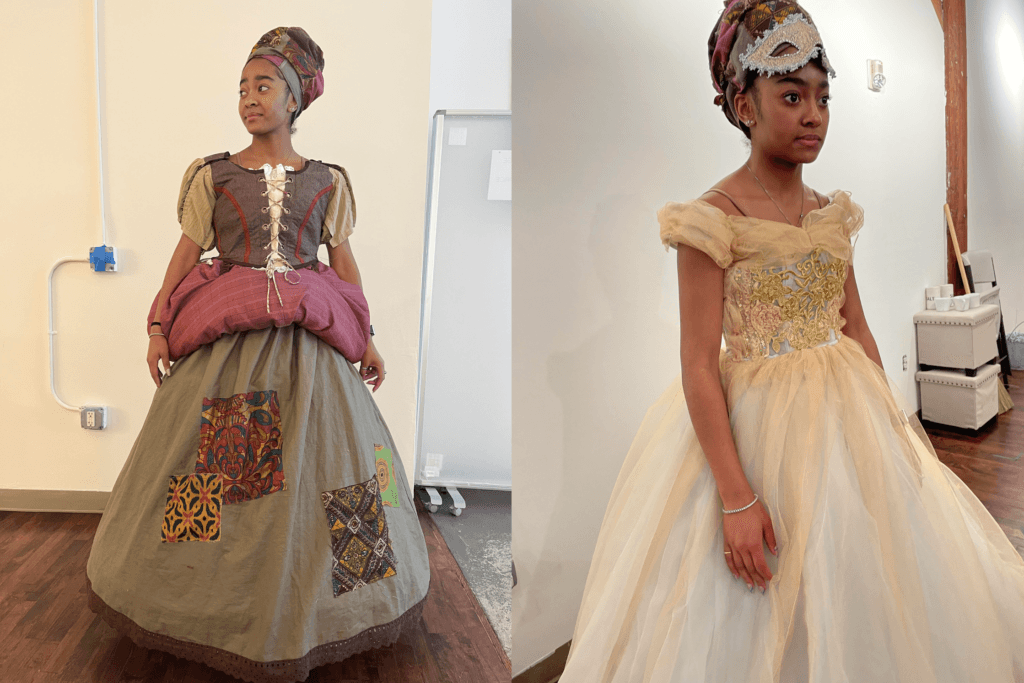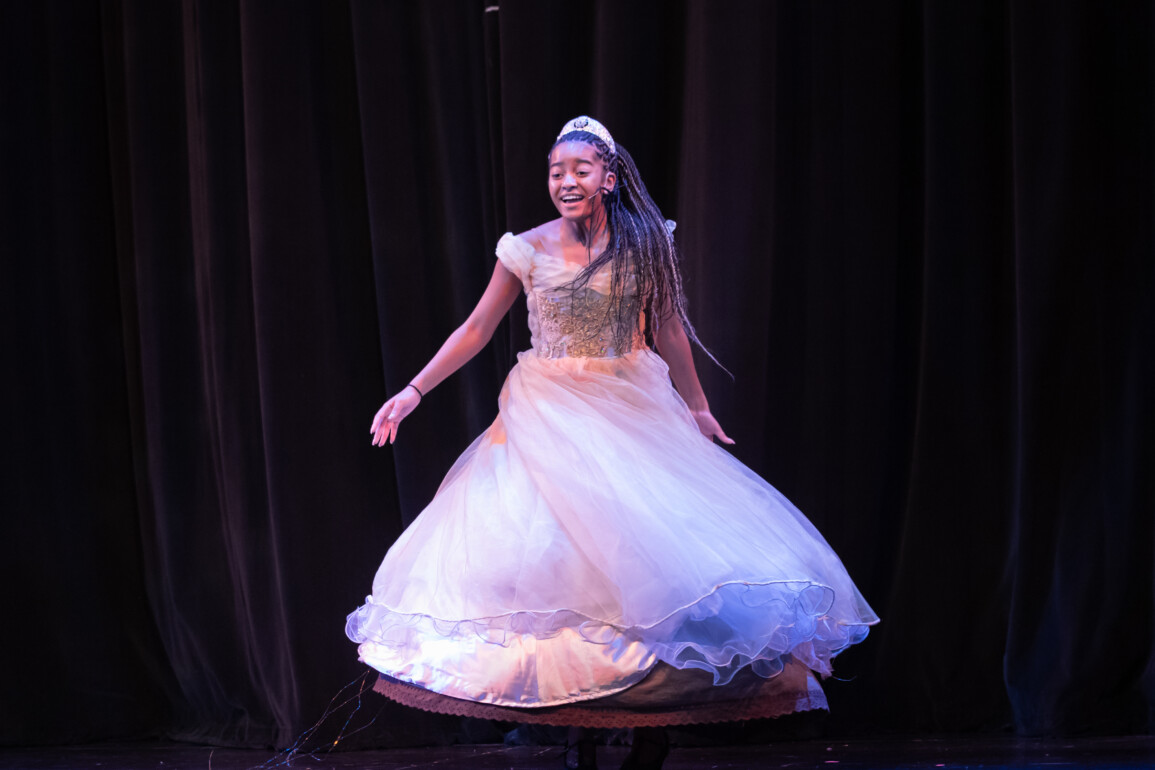By Lo Olbin, BA Fashion Journalism
We’ve all heard the story. A beautiful girl trapped to serve her mean step-sisters, dreaming of a night at the palace. A wish upon a star and a bibbidi-bobbidi-boo later, and the transformation of Cinderella is complete. On-screen, this requires nothing more than a few movements of a magical wand. Although in real life, the transformation from rags to ball gown looks a bit different. Right now, the African-American Shakespeare Company puts forth its annual show of Cinderella, and the transformative moment is thanks to non-other than two students of the Academy. Alina Bokovikova, Costume Design program coordinator, recruited students Patric Wang and Xinyi Zhang to take on this project of collaboration, design, and construction to take the magic seen on screen and transform it into a 3D experience at the theatre.

For the audience, the moment on stage that lasts no longer than a few seconds leaves them astonished but nonetheless unaware of the ongoing craftsmanship behind the scenes. The fantastic transformation occurs when the actress pulls two strings attached to the sides of the dress. Pulling these release the rolled-up overlay that has been hidden until this point of the performance. Within one single twirl, the actress reveals the beautiful creation and whips off her headwrap, revealing the hidden tiara.
Costume design differs from fashion design with a few main components. It boils down to the difference in their clientele. “For costume, you design for a character. You design for their personality, background, and era,” says Xinyi Zhang, who was responsible for the design and decorations of the dress. The clothing worn by the performers acts as an extension of the character. Just as much as the actor would vocalize the story, the clothing must reflect and highlight the storyline. For this production, which the African-American Shakespeare Company set up, the costume design was influenced by African culture. “For traditional Cinderella, the hat piece would be a handkerchief, but considering we’re highlighting African-American culture, we used a headwrap, which is more traditional for that culture,” says Alina Bokovikova, who coordinated the collaboration. Another aspect that costume designers need to face is the collaborative challenges that can arise. Although Xinyi and Patric designed the transformational dress for one person, the character of Cinderella is designed for hundreds. The director’s design approval was a vital component for the smoothness of the play. “I want to be very respectful and ensure the dress represents her idea.” Patric Wang comments regarding the topic.
For the African-American Shakespeare Company, this specific production of Cinderella is monumental, considering it’s the first time a 3D experience of the transformation is brought to the stage. “Before they’ve been doing it the old way, Cinderella goes backstage and changes into a pretty dress, coming back with a new look. This year is the first time Cinderella does it Broadway style, like 21st century magic on stage.” Says Alina. This pivotal moment also highlights that the fairy godmother is a title reserved for several people behind the curtains. In the beginning stages of this collaboration, Patric and Xinyi needed to work closely with both actors and directors to ensure there was no room for error when the clock struck showtime. “During technical rehearsals, our students were coming over and helping train the people working in the theater.” Alina comments.
The rehearsals were also a test of the garments in question. With costume design, mass production is not a common way of producing clothes. Instead, each garment is customized to the specific actor who will wear it multiple times on stage. “The costume must be used every show, so we have to make it very comfortable for the performer. It has to be very practical, and when the transformation happens, it has to go smoothly”, says Patric. This dress’s technicality required multiple people’s assistance to perform correctly. Alina highlights this by adding, “the benefits of the Academy students are that they are trained in design and construction, and so they’re capable of doing it all. That’s why I believe that our students are an excellent choice for those theaters”.
Through costume design, the designer brings the character alive; in a way, it’s a show within itself, and many designers develop a personal connection to the character and story. The collaboration of Cinderella is the first time Academy students assisted the theatre. “My goal is to continue talking to the theatre about inviting our students to design their shows,” says Alina. In the future, there will hopefully be more individuals eager to show their skills and immerse themselves in the world of theatre.
And even though costume design might take a bit more than a magical spell, the reward of seeing the final creation in the spotlight is as good as it gets.
If you’re interested in watching Cinderella and Patric and Xinyi’s transformational dress on stage, go to https://www.cityboxoffice.com/eventperformances.asp?evt=2833 for tickets!




